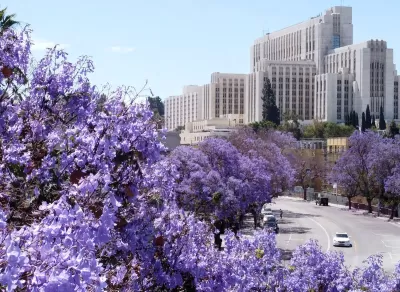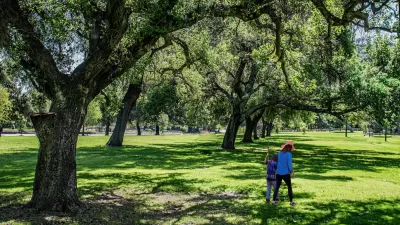LA County's Chief Sustainability Office just released the discussion draft of Room to Grow, the first Community Forest Management Plan for the county.

Made up of trees on both public and private lands, the community or urban forest is an essential part of a healthy, thriving, and resilient community. When spread equitably and supported by other urban greening measures, a well-managed urban forest throughout Los Angeles County can deliver a wide range of benefits, such as healthier soils, biodiversity, habitats, shading from heat, and greater community health and well-being.
L.A. County's Chief Sustainability Office (CSO) recently released the discussion draft of Room to Grow, the first Community Forest Management Plan (CFMP) for the county which will serve as a blueprint to guide the planting of new trees and the protection of mature trees throughout the region. The public can review the plan, explore associated resources, and provide comments through the CFMP website. The Room to Grow plan is open for public comment through May 8th, 2024. Following the conclusion of the public comment period, the CSO will revise the document and prepare it for adoption by the Board of Supervisors later this year.
OurCounty, L.A. County's Sustainability Plan, calls for the development of a CFMP to ensure a climate-appropriate, healthy community tree canopy that is equitably distributed. A key goal for the CFMP is to address inequities in the distribution of trees and tree canopy as well as the benefits they offer. Research shows that lower-income neighborhoods and communities of color often have less tree canopy.
FULL STORY: Room to Grow: LA County Community Forest Management Plan

Trump Administration Could Effectively End Housing Voucher Program
Federal officials are eyeing major cuts to the Section 8 program that helps millions of low-income households pay rent.

Planetizen Federal Action Tracker
A weekly monitor of how Trump’s orders and actions are impacting planners and planning in America.

The 120 Year Old Tiny Home Villages That Sheltered San Francisco’s Earthquake Refugees
More than a century ago, San Francisco mobilized to house thousands of residents displaced by the 1906 earthquake. Could their strategy offer a model for the present?

HSR Reaches Key Settlement in Northern California City
The state’s high-speed rail authority reached an agreement with Millbrae, a key city on the train’s proposed route to San Francisco.

Washington State Legislature Passes Parking Reform Bill
A bill that would limit parking requirements for new developments is headed to the governor’s desk.

Missouri Law Would Ban Protections for Housing Voucher Users
A state law seeks to overturn source-of-income discrimination bans passed by several Missouri cities.
Urban Design for Planners 1: Software Tools
This six-course series explores essential urban design concepts using open source software and equips planners with the tools they need to participate fully in the urban design process.
Planning for Universal Design
Learn the tools for implementing Universal Design in planning regulations.
Ada County Highway District
Clanton & Associates, Inc.
Jessamine County Fiscal Court
Institute for Housing and Urban Development Studies (IHS)
City of Grandview
Harvard GSD Executive Education
Toledo-Lucas County Plan Commissions
Salt Lake City
NYU Wagner Graduate School of Public Service





























